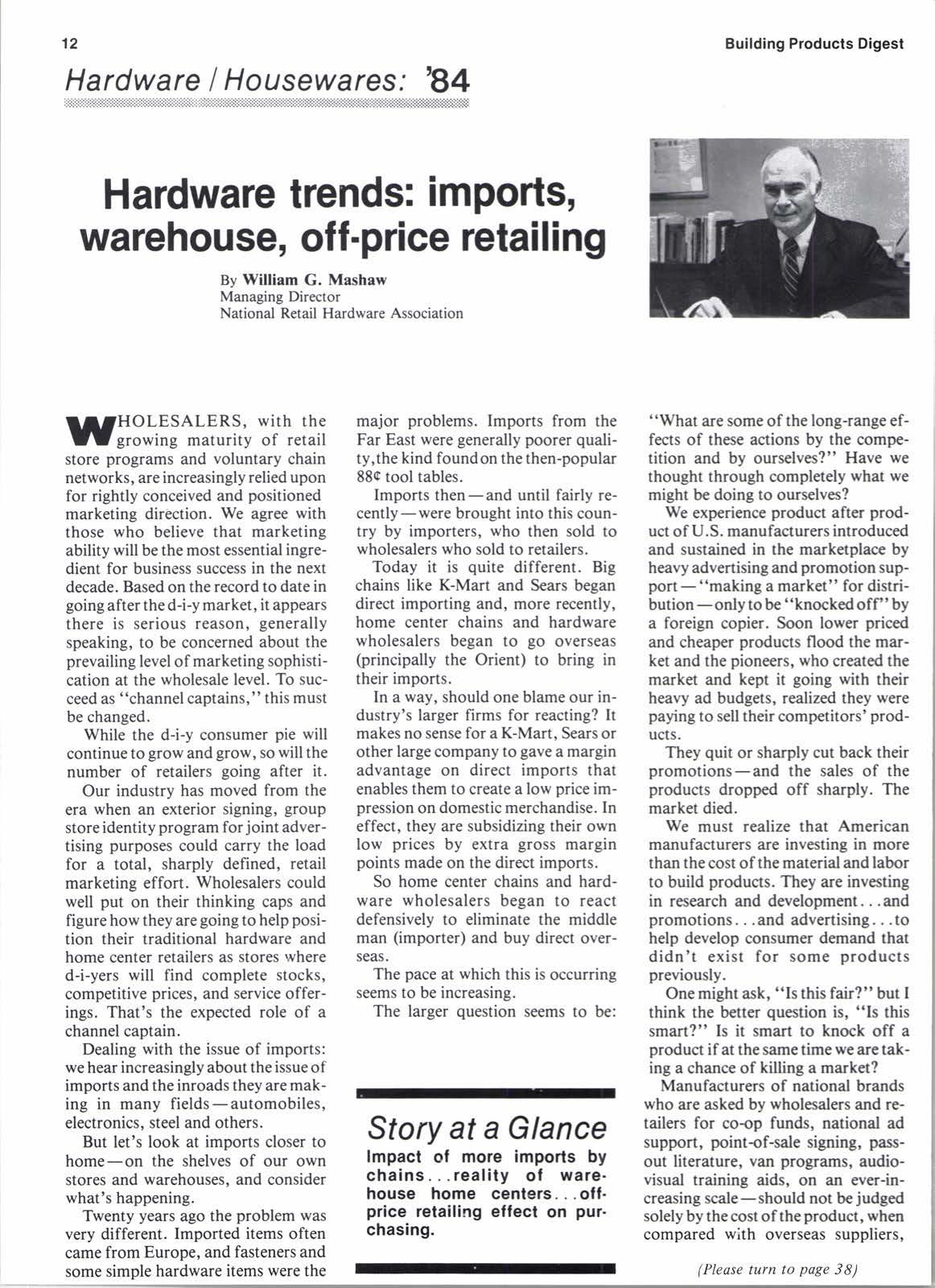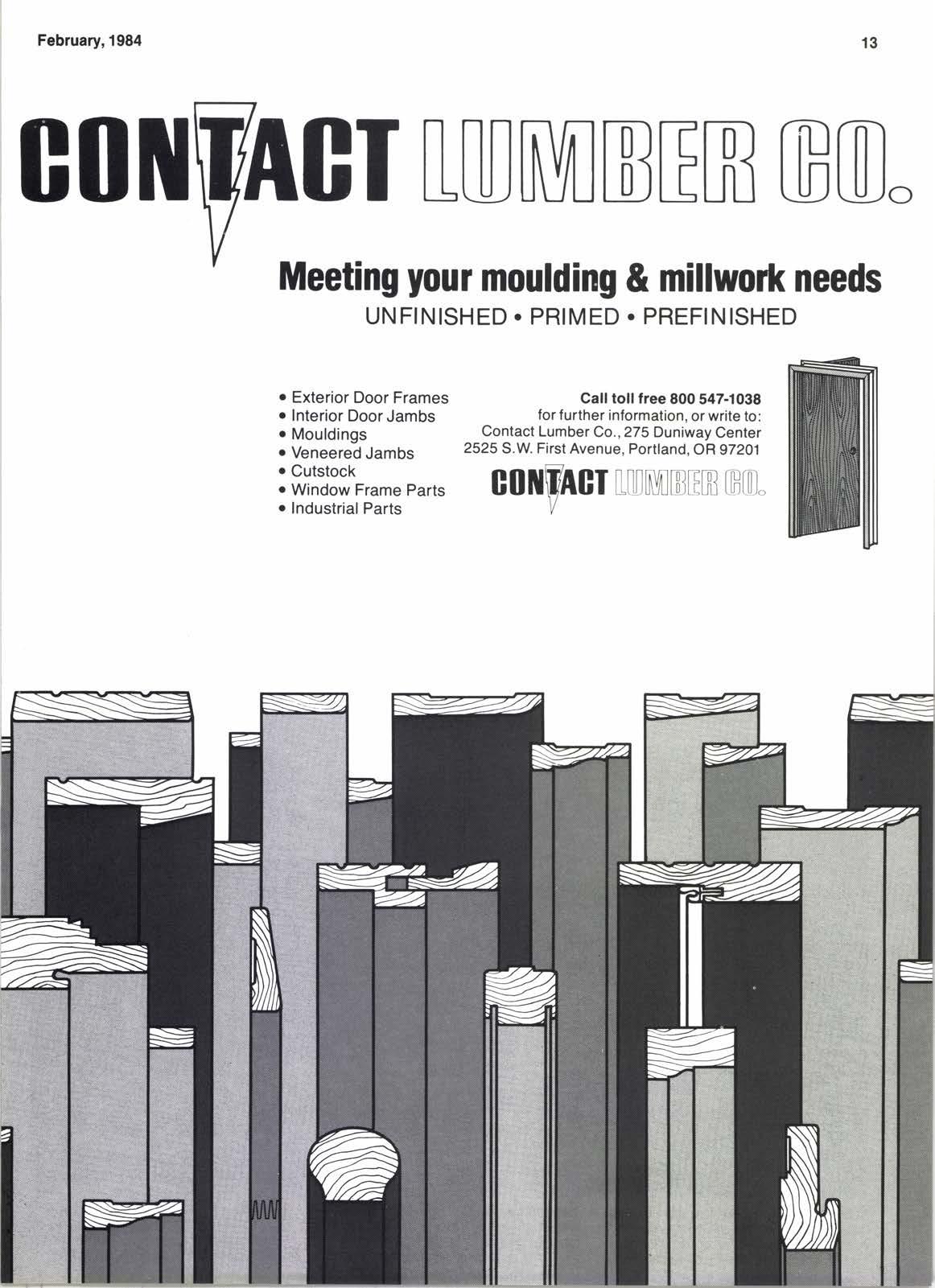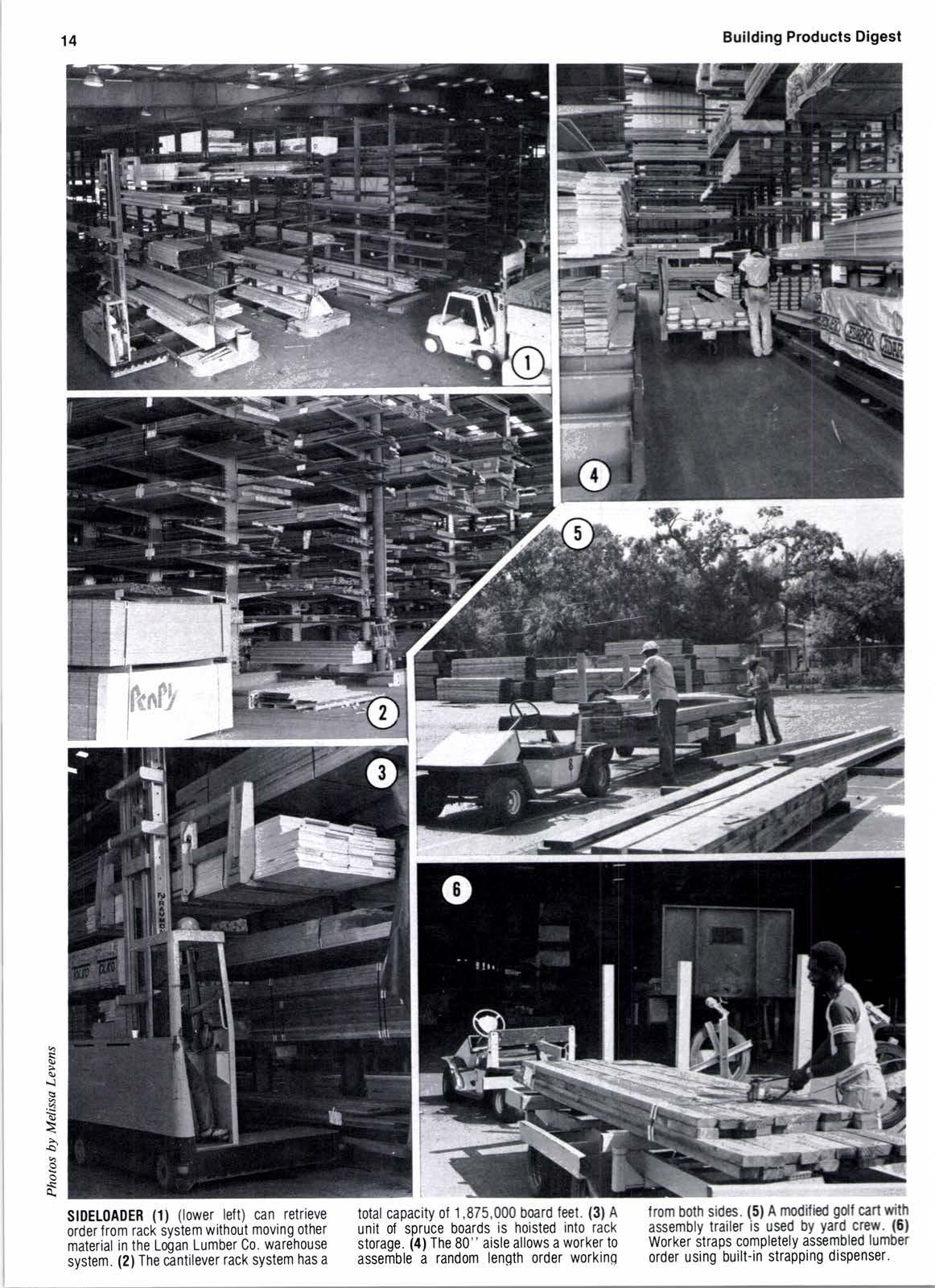
2 minute read
Hardware trends: imPofis, warehouse, off-price retailing
By William G. Mashaw Managing Drector National Retail Hardware Association
W#3'l:iil"""li;:'Ji.ll;
store programs and voluntary chain networks, are increasingly relied upon for rightly conceived and positioned marketing dir0ction. We agree with those who believe that marketing ability will be the most essential ingredient for business success in the next decade. Based on the record to date in going after the d-i-y market, it appears there is serious reason, generally speaking, to be concerned about the prevailing level of marketing sophistication at the wholesale level. To succeed as "channel captains," this must be changed.
While the d-i-y consumer pie will continue to grow and grow, so will the number of retailers going after it.
Our industry has moved from the era when an exterior signing, group store identity program forjoint advertising purposes could carry the load for a total, sharply defined, retail marketing effort. Wholesalers could well put on their thinking caps and figure how they are going to help position their traditional hardware and home center retailers :rs stores where d-i-yers will find complete stocks, competitive prices, and service offerings. That's the expected role of a channel captain.
Dealing with the issue of imports: we hear increasingly about the issue of imports and the inroads they are making in many fields-automobiles, electronics, steel and others.
But let's look at imports closer to home-on the shelves of our own stores and warehouses, and consider what's happening.
Twenty years ago the problem was very different. Imported items often came from Europe, and fasteners and some simple hardware items were the major problems. Imports from the Far East were generally poorer quality,the kind foundon the then-popular 880 tool tables.
Imports then-and until fairly recently-were brought into this country by importers, who then sold to wholesalers who sold to retailers.
Today it is quite different. Big chains like K-Mart and Sears began direct importing and, more recently, home center chains and hardware wholesalers began to go overseas (principally the Orient) to bring in their imports.
In a way, should one blame our industry's larger firms for reacting? It makes no sense for a K-Mart, Sears or other large company to gave a margin advantage on direct imports that enables them to create a low price impression on domestic merchandise. In effect, they are subsidizing their own low prices by extra gross margin points made on the direct imports.
So home center chains and hardware wholesalers began to react defensively to eliminate the middle man (importer) and buy direct overseas.
The pace at which this is occurring seems to be increasing.
The larger question seems to be:
"What are some of the long-range effects of these actions by the competition and by ourselves?" Have we thought through completely what we might be doing to ourselves?
We experience product after product of U.S. manufacturers introduced and sustained in the markcplace by heavy advertising and promotion sup port - "making a market" for distribution-onlyto be "knockedoff 'by a foreign copier. Soon lower priced and cheaper products flood the market and the pioneers, who created the market and kept it going with their heavy ad budgets, realized they were paying to sell their competitors' products.
They quit or sharply cut back their promotions-and the sales of the products dropped off sharply. The market died.
We must realize that American manufacturers are investing in more than the cost of thematerial and labor to build products. They are investing in research and development...and promotions. .and advertising. .to help develop consumer demand that didn't exist for some products previously.
One might ask, "Is this fair?" but I think the better question is, "Is this smart?" ls it smart to knock off a product if at the sametimewearetaking a chance of killing a market?
Manufacturers of national brands who are asked by wholesalers and retailers for coop funds, national ad support, point-of-sale signing, passout literature, van programs, audiovisual training aids, on an ever-increasing scale-should not be judged solely by the cost of the product, when compared with overseas suppliers,
Meeting












